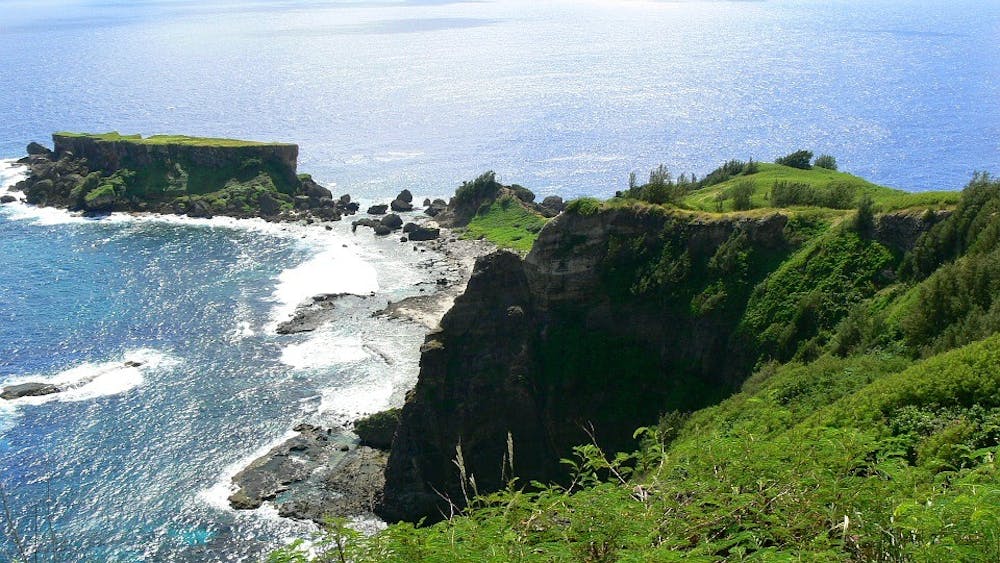
I grew up surrounded by “Pasifika” culture. Soaking up the languages, celebrating Samoan dance at festivals, eating delicious Tongan food, and even watching satirical “brown TV.” The shows, food, and culture weren’t spectacles — they were simply a part of New Zealand life.
But, by living in a country whose Samoan population nearly equals that of Samoa itself, I became well-aware of specific issues that the Pasifika community faces.
This population disproportionately confronts housing issues, health issues, and barriers to higher education.
Asians, as a separate minority group, do not face these exact issues.
So, imagine my shock coming to Penn hearing the term “API issues” tossed around, seeing there’s an Asian Pacific Student Coalition, and discovering that in the United States, Asian-Pacific is a common population aggregation.
Of course, the United States is not New Zealand. But here are the cold, hard, American facts.
Less than 20 percent of Pacific Islanders who took the ACT met the scoring benchmarks in all four subject areas, and 40 percent met none at all. Only 18 percent of Pacific Islander adults hold a bachelor’s degree. Beyond educational barriers, many live below the poverty line. According to the Asian & Pacific Islander American Health Forum, there’s evidence that Pacific Islander young men exhibit downward social mobility.

I sat down with College freshman Cerinn Hwang, who is from Saipan, the largest of the Northern Mariana Islands.
On the state of education in Saipan, Hwang said, “it’s just not that encouraging to the students and a lot of them don’t even consider taking the SATs or the ACT.”
She explained that some of the cultures common to the Pacific Islands “don’t instill into people that it’s a great opportunity [to go to college].”
The culture of some Asian countries, on the other hand, prescribes education as the key to success.
The median annual household income of Indian Americans is $100,000, compared with the U.S. average of $53,600. On many other metrics of education and economic well-being, the U.S. Asian population performs better than the U.S. average, although sub-groups vary widely (the disaggregation of Asian Americans is a separate issue in itself).
It is clear that Asian Americans and Pacific Islanders are not only culturally and racially different, but face completely different struggles and therefore their issues yield very different conversations.
Hwang also shared my surprise that API was an aggregation at Penn, and in the continental United States. On Saipan, “it’s just not something you see as part of one group.”
Here are two reasons why their aggregation is not only grossly inaccurate, but incredibly harmful for Pacific Islanders.
In higher education, Pacific Islanders’ inclusion in “Asian-Pacific Islanders” closes them off to attention and support in attaining educational achievement. Robert Teranishi, professor of education and Asian American studies at the University of California at Los Angeles, says the API umbrella perpetuates the myth that all Asians and Pacific Islanders are academically advantaged, which “is misleading and really damaging,” and “it renders these communities invisible.”
But there’s an even more concerning symptom of this nonsensical lumping together of two very different racial groups.
Penn doesn’t make available statistics on the number of Pacific Islander students, instead opting to classify them in an “Asian American/Pacific Islander” general jumble. An idea as ludicrous as aggregating Native Americans and white people, this subsumes the whole Pacific racial group and culture within the completely dissimilar, dominating group of Asians.
Penn’s lack of desire to properly classify Pacific Islanders as their own race fuels existing ignorance about the group. Penn students, and Americans in general, already have limited exposure to who Pacific Islanders are.
In the United States, there are approximately 13.8 million Asians and only 764,000 Pacific Islanders.
The Pacific Islander population in the United States is already miniscule — the API label does nothing but diminish their presence further, making the public even more unaware of the unique culture and issues they face, independent of Asians.
I also reached out to College junior and APSC Chair Soomin Shin. While Shin advocates for the coming together of these groups for coalition-building purposes, she said that “there is difficulty because sometimes we don’t focus on Pacific Islander issues.”
“If we group API together and only focus on Asian-American issues, that’s not a good thing,” Shin explained to me. “We need to fix that.”
The issue, though, is that it’s near impossible to group API together without focusing solely on Asian-American issues. Out of APSC’s 24 constituents, only one, Penn Hawaii Club, is exclusively related to Pacific interests.
When Hwang joined APSC, she “noticed that the ones that are actively giving presentations [were] Asian groups.” With the severe imbalance in numbers, this aggregation drowns out Pacific Islander concerns and even their presence.
“That’s what has been happening,” admits Shin. “It’s almost a numbers thing.”
It’s time for Asian Americans to stop talking about their struggles in the “API community,” without actually knowing anything about the PI community. I’m proud of New Zealand’s prominent Pasifika culture. The misclassification in the United States carelessly erases Pacific Islanders’ true identity. Let’s end this inaccurate aggregation before they’re completely forgotten.

LUCY HU is a College sophomore from Auckland, New Zealand, studying political science. Her email address is lucyhu@sas.upenn.edu. “Fresh Take” usually appears every other Sunday.
The Daily Pennsylvanian is an independent, student-run newspaper. Please consider making a donation to support the coverage that shapes the University. Your generosity ensures a future of strong journalism at Penn.
Donate







